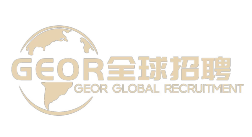Enterprise International Talent Upgrade: Analysis of the Whole Process Strategy of Hiring Foreign Employees Efficiently
Enterprise international talent upgrade: the whole process strategy analysis of efficiently hiring foreign employees
Under the global competition pattern, the demand for professionals with international vision and cross-cultural collaboration ability continues to rise. Hiring foreign employees can not only inject innovative genes into enterprises, but also help technological breakthroughs and overseas market expansion. However, from job demand analysis to long-term retention management, every link needs scientific planning. The following is a practical overview of key strategies to help companies achieve international talent upgrades.
1. demand anchoring: reverse talent portrait with business objectives
Enterprises need to avoid blind recruitment of "internationalization for internationalization, turn to dismantle the core value of foreign employees from the strategic level. For example, if a technology company plans to explore the Southeast Asian market, it can give priority to recruiting product managers who are familiar with the local digital payment ecology. If the manufacturing industry needs to upgrade its production line, it needs to introduce German engineers who master industrial 4.0 technology. By building a three-dimensional talent model of "skills + experience + cultural adaptation", companies can greatly improve recruitment efficiency.
case reference : in order to develop a voice interaction system that meets the habits of European and American users, a smart home enterprise explicitly requires candidates to have natural language processing background, English mother tongue level and consumer electronics industry experience when recruiting foreign employees, finally, the product localization cycle is shortened by 40% through precise screening.
2. compliance building: building a cross-border employment safety system
The recruitment of foreign employees involves multi-link compliance risks such as visa processing, tax declaration, and labor rights protection. Enterprises need to study the policies of target countries in advance:
- visa type : choose work visa, talent visa or project visa according to the nature of the job;
- salary standard : some countries require the salary of foreign employees to reach 1.5 times of the local median for the same job;
- employment certificate : enterprise qualification, job necessity description and candidate resume matching degree report shall be provided.
Risk Avoidance Suggestions : Cooperate with professional legal institutions to establish compliance checklists and regularly update policy changes in various countries to avoid interruption of employment due to procedural defects.
3. Channel Breakthrough: Building a Three-dimensional Talent Access Network
Traditional recruitment platforms are difficult to meet the precise needs of foreign talent recruitment, and enterprises need to expand diversified paths:
- industry vertical community : directional mining engineers in technical communities such as GitHub and Stack Overflow;
- Overseas Alumni Network : Establish cooperation with top university employment centers in target countries to target high-quality graduates;
- international competition : attract global developers through hacker marathon and innovation challenge;
- employee internal promotion : set up recommend incentive mechanism to encourage existing foreign employees to recommend the same trade.
innovative practice : a game company successfully recruited 3 senior Japanese planners and established a long-term talent reserve pool by holding a "global level design competition" on Twitch platform.
4. two-way screening: designing a cultural adaptation evaluation mechanism
The cross-cultural collaboration ability of foreign employees directly affects team effectiveness. Enterprises need to set up two-way evaluation in the recruitment process:
- ability test : investigate professional skills through case analysis and simulation projects;
- cultural adaptation : adopt behavioral interview method to understand candidates' experience in dealing with cultural conflicts;
- team feedback : arrange for candidates to have informal communication with potential colleagues and collect opinions from multiple parties.
Tool recommend : Use cross-cultural communication scale (CCI) to quantitatively evaluate the candidate's language flexibility, value tolerance and other dimensions to provide data support for decision-making.
5. integration empowerment: building a sustainable talent ecosystem
The retention rate of foreign employees is closely related to their career development expectations. Enterprises can improve their sense of belonging through the following ways:
- personalized growth path : formulate a dual-channel promotion system for technical experts and management positions;
- cultural integration support : provide language training, local life guide and cross-cultural communication workshop;
- differentiated benefits : provide flexible working hours, international medical insurance or family leave according to employees' needs;
- identity building : enhance the sense of participation of foreign employees through cultural days, team building and other activities.
data support : research shows that the retention rate of foreign employees in enterprises that provide cultural integration support is 28% higher than the industry average, and the number of innovative proposals has increased by 1.5 times.
conclusion
hiring foreign employees is the key to an enterprise's globalization strategy, but its success depends on the accuracy of demand, compliance, channel innovation and cultural adaptation. Through systematic layout and dynamic optimization, enterprises can not only break through the talent bottleneck, but also stimulate innovation potential in the multi-cultural collision, and build core competitiveness for long-term development.
